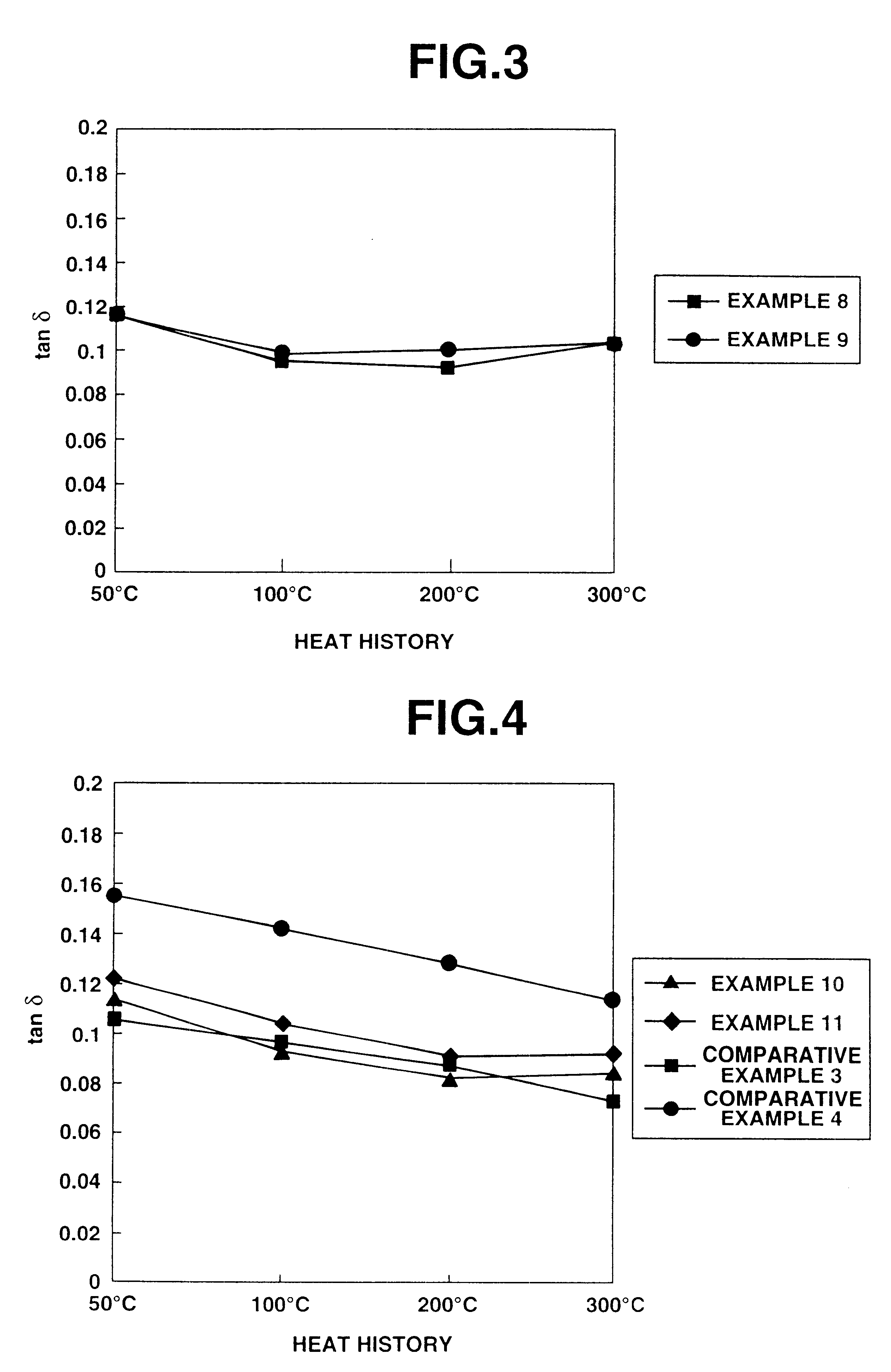Non-asbestos friction materials
a friction material and non-asbestos technology, applied in the field of non-asbestos friction materials, can solve the problems of poor moldability, inadequate heat resistance, and decline in braking performan
- Summary
- Abstract
- Description
- Claims
- Application Information
AI Technical Summary
Benefits of technology
Problems solved by technology
Method used
Image
Examples
examples 8 and 9
The friction material compositions shown in Table 5 were formulated in the proportions indicated, and uniformly mixed using a Lodige mixer. The compositions were then preformed in a pressure mold under a pressure of 100 kg / cm.sup.2 for a period of 1 minute. The preforms were molded for the desired length of time at a temperature of 145.degree. C. and a pressure of 180 kg / cm.sup.2, then heat treated or postcured at 180.degree. C. for 5 hours. This procedure yielded friction materials in the respective examples.
Test pieces measuring 55(L).times.10(W).times.3 mm(T) were fabricated from the compositions prepared in Examples 8 and 9. These test pieces were used to measure the vibration damping factor (tan .delta.) in the same manner as described above. The results are shown in Table 6. In addition, FIG. 3 plots the results from Examples 8 and 9.
As is apparent from the results shown in Tables 5 and 6, and in FIG. 3, the non-asbestos friction materials within the scope of the invention can...
PUM
| Property | Measurement | Unit |
|---|---|---|
| temperature | aaaaa | aaaaa |
| temperature | aaaaa | aaaaa |
| temperature | aaaaa | aaaaa |
Abstract
Description
Claims
Application Information
 Login to View More
Login to View More - R&D
- Intellectual Property
- Life Sciences
- Materials
- Tech Scout
- Unparalleled Data Quality
- Higher Quality Content
- 60% Fewer Hallucinations
Browse by: Latest US Patents, China's latest patents, Technical Efficacy Thesaurus, Application Domain, Technology Topic, Popular Technical Reports.
© 2025 PatSnap. All rights reserved.Legal|Privacy policy|Modern Slavery Act Transparency Statement|Sitemap|About US| Contact US: help@patsnap.com



